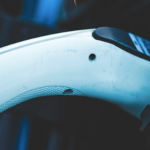How forging helps strengthen one of the most important gear in Automatic Transmissions
Why do Automatic Transmission Vehicles Need Park Lock Mechanism?
For a long time, the gear shifts in a vehicle were made manually as the automatic transmission technology was in its initial stage. With the advances in the technology and because of shifting consumer preference to automatic transmission, these are now gaining popularity. Automatic transmission in vehicles not only ensures greater comfort but also enhances safety by allowing the driver to focus on the other driving aspects.
Automatic transmission consists of a hydrodynamic torque converter where the engine does not have to be disconnected from the gearbox, as gears are automatically shifted under load, transmitting the engine torque even during a gear change.
Vehicles with an automatic transmission are regulated by law to have a mechanism in addition to the usual handbrake that prevents rollaway after it has been parked. The mechanism must be able to withstand high torque created by the vehicle and therefore must be designed to be robust enough to hold for a lifetime of usage without self-disengaging.
According to the standard number 114 in Federal Motor Vehicle Safety Standards and Regulations (FMVSS), passenger cars with a Gross Vehicle Weight Rating of 4,536 kg or less must be fitted with a Park Lock Mechanism (PLM) for avoiding possible vehicle theft, reduce the incidence of crashes resulting from unauthorized use of a motor vehicle and unnecessary rollaway.
So how does a Park Lock Mechanism (PLM) work?
The two main components of a Park lock mechanism are the Parking Gear and the Parking Pawl. A parking pawl is a device incorporated in an automatic transmission for it to lock up the transmission. It is engaged when the transmission shift lever selector is placed in the Park position. Hence, when an Automatic transmission car is shifted in the P position, the pawl engages with the transmission system, and locks up the transmission, so no power is transmitted. This ensures the car stays in position even on slopes and steeps.
Why does the Parking gear need to be a strong component?
The parking gear is essentially a safety component, designed to keep the vehicle in place and not allow rollaway or movement. As explained above, once the vehicle is shifted in the Park position, the Parking pawl is engaged with the parking gear. This causes friction of both these components and eventually leads to wear and tear of the Parking gear.
Now imagine, if a vehicle parked on a slope, experiences parking gear failure, and starts rolling down, the damage it will cause to the vehicle, other vehicle and even pedestrians could be huge. This clearly implies that the Parking gear, is a component which can never experience failure in any circumstance.
So how can we ensure that the Parking gear does not ever fail? We design it to have higher strength to withstand any kind of loads from the beginning.
How to achieve higher strength in Gears?
The load carrying capacity of a gear tooth highly depends upon the ultimate tensile strength or the yield strength of the material. When a gear is subjected to fluctuating forces, the endurance strength of the tooth keeps it from failure. Forging of gears rather than machining may result in increased yield from raw material. Forging can contribute to the following factors,
- Improve mechanical properties such as impact toughness and fatigue strength
- Improve fatigue performance
- Positively influence material flow lines
- Effects of forging on micro segregation structures can remain even after normalizing heat treatment
- Eliminate requirement of laser welding
Net forged gears
Net shaped forged gears offer a host of benefits over the conventionally designed gears. Besides the better design, the production technology has a significant impact on the strength and offers a potential to reduce the weight. Net-forged gears provide several advantages compared to gears cut from the bar stock. Net forging saves as much as 30 percent of the material, depending on the size of the gear.
Apart from weight reduction, here are some other benefits this technology offers:
- Minimal grinding or finish hobbing is required as compared to hobbing from blank.
- Net forged gears offer significant cost savings opportunity over cut blanks and other metalworking processes.
- Hot working of the material through forging provides refined grain flow that orients to the shape of the part, imparting superior strength, ductility, and resistance to impact and fatigue with no metallurgical defects such as the voids and gas pockets.
- Superior strength to weight ratio enabling to produce a part that is lighter and stronger making them ideal choices for industries and heavy applications.
Forged gear teeth have higher dynamic strengths. This improvement in strength is discussed by the authors Abdel-Rahman and Dean (1981) who state that fully forged gear teeth exhibit a 30% greater impact strength compared to machined teeth. Moreover, as stated in the literature that forged gears exhibit a fatigue life double that of machined gears. Thus, usage of Net-forged gears for the application of park lock mechanism, would result in a better and longer performance of parking gears, also making them suitable for engineers and designers to build lighter, stronger, and more efficient transmission systems saving costs on material and machining.
Solutions by O-Oka
To provide stronger gears, O-OKA Japan, is using the process of net-shape forging to produce a wide range of gears, aiming to minimize material usage and machining efforts to further downsize, imparting optimum material strength.
O-OKA makes 42 million net-forged gears per annum for its OEM customers worldwide which find a variety of applications in transmissions such as manual, semi-automatic, automatic, hybrid, DCT, and EV powertrains.
For any feedback or questions, you are most welcome to contact me at prashant@quanzen.com







